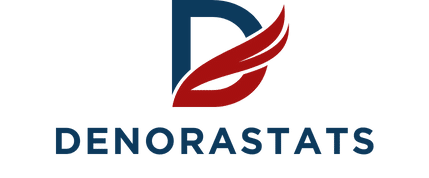European regional development fund: boosting eu cohesion 2021-2027

Discover how the European Regional Development Fund (ERDF) is set to enhance EU cohesion from 2021 to 2027. By focusing on economic disparities, fostering innovation, and supporting sustainable projects, the ERDF aims to strengthen regional unity. Explore how targeted funding and strategic initiatives are shaping a more balanced and prosperous Europe. Stay informed about the pivotal role the ERDF plays in regional development and growth.
Overview of the European regional development fund (ERDF)
The European Regional Development Fund (ERDF) is a cornerstone of the EU’s efforts to bolster economic, social, and territorial cohesion by reducing regional disparities. For the 2021-2027 period, the ERDF is dedicated to creating a smarter, greener, more connected, and more social Europe.
Have you seen this : Navigating customs compliance for successful calais trading
Objectives and goals of ERDF
The primary objective of the ERDF is to mitigate regional imbalances across the EU. This is achieved by funding projects that promote economic growth, enhance innovation, and support sustainable development. The ERDF aims to:
- Boost regional competitiveness and innovation.
- Support the transition to a low-carbon economy.
- Enhance connectivity through improved infrastructure.
- Promote social inclusion and combat poverty.
- Foster integrated territorial development.
Key focus areas for 2021-2027 period
The 2021-2027 programming period of the ERDF focuses on five main policy objectives:
Also read : What Are the Advanced Techniques for Organic Pest Control in Urban Farming Initiatives?
- Smarter Europe: Encouraging innovation, digitalization, and economic transformation.
- Greener Europe: Supporting clean energy, climate change mitigation, and environmental protection.
- Connected Europe: Enhancing mobility and connectivity through strategic transport and digital networks.
- Social Europe: Strengthening social inclusion, education, and employment opportunities.
- Europe closer to citizens: Promoting sustainable and integrated development of urban, rural, and coastal areas.
Overview of funding allocation
The ERDF operates on a co-financing model, where EU funding is complemented by national or regional funds. This collaborative approach ensures that projects have substantial backing and are aligned with local needs. The allocation of funds is based on performance indicators and assessments to maximize impact and efficiency.
For more detailed information on the European Regional Development Fund and its initiatives, you can visit https://www.welcomeurope.com/en/programs/erdf-european-regional-development-fund/.
Key Initiatives and projects funded by ERDF
The European Regional Development Fund (ERDF) prioritizes innovation and sustainable development to foster regional growth. One notable initiative is the support for renewable energy projects in regions like Pomorskie, Poland, where loans are provided to boost green energy production. Additionally, the ERDF funds venture capital for innovative start-ups in cities such as Berlin, promoting technological advancements and economic transformation.
Enhancing connectivity and social inclusion
Improving connectivity and social inclusion is another crucial focus of the ERDF. The fund supports strategic transport infrastructure projects that enhance mobility across EU regions, ensuring better access to services and markets. For instance, affordable housing initiatives in various member states, such as those promoted by SIH, aim to integrate marginalized communities and reduce social disparities.
Examples of successful past projects
Several past projects underscore the ERDF's impact on regional development. The 'La Financière Région Réunion' (FRR) fund of funds in La Réunion, France, exemplifies how ERDF financing aids SMEs, including micro-enterprises, by implementing and managing financial instruments. Another success story is Morphosis Capital's wellness enhancement project in Romania, which highlights the fund's role in improving quality of life and economic prospects in less developed regions.
These initiatives illustrate how the ERDF's strategic funding supports diverse projects that drive innovation, sustainability, connectivity, and social inclusion across the EU.
Application and selection process
To propose a project for ERDF funding, applicants must follow a structured process. Initially, interested parties need to identify the relevant national or regional operational program that aligns with their project objectives. Each program has specific priorities and funding criteria. Applicants must then prepare a detailed project proposal, which includes a comprehensive description of the project, its objectives, expected outcomes, and a clear budget plan. The proposal must demonstrate how the project contributes to the ERDF’s goals, such as boosting regional competitiveness or supporting sustainable development.
Key performance indicators and assessment criteria
The assessment of project proposals is based on a set of key performance indicators (KPIs) and criteria. These KPIs include measures of economic impact, such as job creation and GDP growth, as well as environmental benefits, like reductions in carbon emissions. Additionally, projects are evaluated on their potential to enhance social inclusion and promote territorial cohesion. The selection process involves a thorough review by national or regional managing authorities, who assess the feasibility, sustainability, and alignment of the project with the ERDF’s strategic objectives.
Accessing information on funded projects and their impacts
Information about funded projects and their impacts is readily accessible to the public. The European Commission and national managing authorities maintain databases and online portals where detailed information on ongoing and completed projects can be found. These resources provide insights into the types of projects funded, their progress, and their outcomes. This transparency ensures accountability and allows stakeholders to understand the tangible benefits of the ERDF’s investments in regional development.
